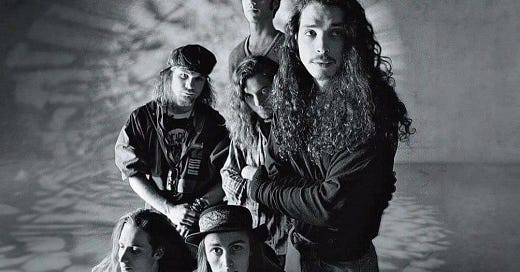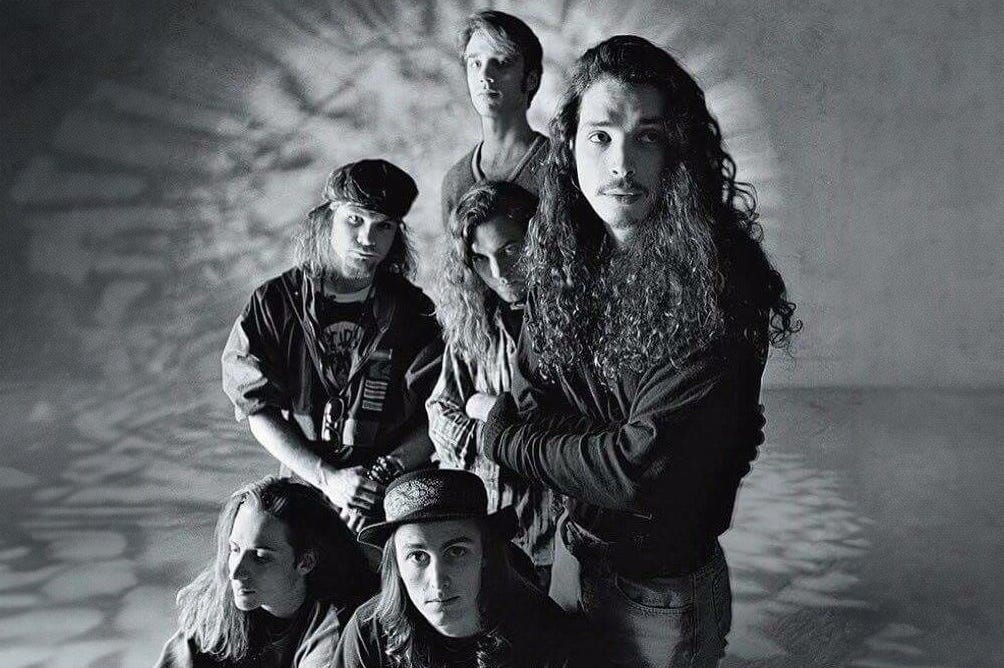Temple of the Dog | History of the Band
From Grief to Glory: The Role of a Pivotal Album in Shaping '90s Rock
Formation
In the wake of Mother Love Bone frontman Andrew Wood's tragic passing in 1990, Temple of the Dog emerged as a poignant tribute to a lost friend and a pivotal project in Seattle's burgeoning music scene. Spearheaded by Chris Cornell of Soundgarden, the group featured a lineup that would later define a generation of rock music, including Stone Gossard, Jeff Ament, Mike McCready of Pearl Jam, and Soundgarden's Matt Cameron, who would also join Pearl Jam. This collaboration marked a unique moment in rock history, uniting members of what would become two of the most influential bands of the 90s, Soundgarden and Pearl Jam.
Mike Bankhead suggested this artist for a future Dig Me Out podcast episode. Each month, our Patrons are presented with a selection of albums suggested by listeners and asked to vote for their favorite. The album with the most votes is given another minute in the spotlight. Vote and share your thoughts.
Musical Style and Evolution
Bridging the raw energy of grunge with the emotional depth of alternative rock, Temple of the Dog carved a unique niche in the music landscape. Their sound—a melding of Soundgarden's intensity and the nascent voice of Pearl Jam—captured the collective grief and artistic spirit of an era, marking a seminal point in the evolution of '90s music.
Discography
"Temple of the Dog" (1991): This sole release stands as a monument to the band's emotional depth and musical prowess. Spurred by the standout track "Hunger Strike," a duet between Chris Cornell and Eddie Vedder, the album eventually soared to platinum status. Released on A&M Records, it epitomizes the collaborative spirit of Seattle's music scene, capturing hearts with its authenticity and passion. Critics like Steve Huey of AllMusic praised its bridging of two pivotal Seattle sounds, while David Fricke of Rolling Stone hailed its immortal quality. The album, initially overlooked, found its success belatedly as its members rose to fame, highlighting its lasting impact and the timeless appeal of its tribute.
Influence and Legacy
At its release and retrospectively, the album was celebrated for its genuine reflection of grief and brotherhood. Its reception grew alongside the ascendancy of Soundgarden and Pearl Jam. The album garnered acclaim for its authenticity and emotional resonance, bridging the gap between Mother Love Bone's glam-infused rock and Pearl Jam's earnest, hard-rocking seriousness. Critics and fans alike praised the project, with the album's delayed success underscoring the enduring appeal of the supergroup's collaborative spirit.
The band's live performances have been sporadic but meaningful. During their initial phase, they only played a full one-hour set while rehearsing and writing the material for their album. However, they have reunited for live one-off performances, particularly when members' schedules with Soundgarden and Pearl Jam aligned. Notable instances include their participation in Pearl Jam's 20th-anniversary tour, where Chris Cornell joined Pearl Jam to perform iconic Temple of the Dog songs like "Hunger Strike," "Say Hello 2 Heaven," and "Reach Down". Furthermore, at Pearl Jam's 20th-anniversary concerts at Alpine Valley in 2011, Cornell joined the band for performances of "Stardog Champion," "Say Hello to Heaven," "Hunger Strike," "Call Me A Dog," "All Night Thing," and "Reach Down," demonstrating the enduring connection and musical synergy among the members.
Temple of the Dog's journey from a tribute project to a platinum-selling album encapsulates the transformative power of music to heal, unite, and inspire. Their story, marked by seminal reunions and heartfelt performances, continues to resonate, affirming their place in the pantheon of rock legends.
Sources
Wikipedia
Loudwire
UpVenue
Jambase





